#royal bc museum
Text
youtube
New video! Haven't done some hard-hitting commentary in a while, but this display has SO MUCH potential! And it is so bad!!!
17 notes
·
View notes
Text


Mayan Limestone Stela from Guatemala dated to around 683 CE on display at the Royal BC Museum in Victoria, Canada
Lady Six Sky was one of the most important queens of the Maya. Daughter of Mayan nobility she arrived at Naranjo in 682 CE to create a new royal line after a series of war. She ruler between 682 and her son's accession to the throne in 693, continuing as co-ruler until her death in 741.
This stela shows the warrior queen as the young moon goddess, wearing a jade-adorned skirt and trampling a captive.
Photographs taken by myself 2019
#art#archaeology#fashion#mayan empire#maya#guatemala#guatemalan#history#medieval#7th century#royal bc museum#victoria#barbucomedie
66 notes
·
View notes
Text
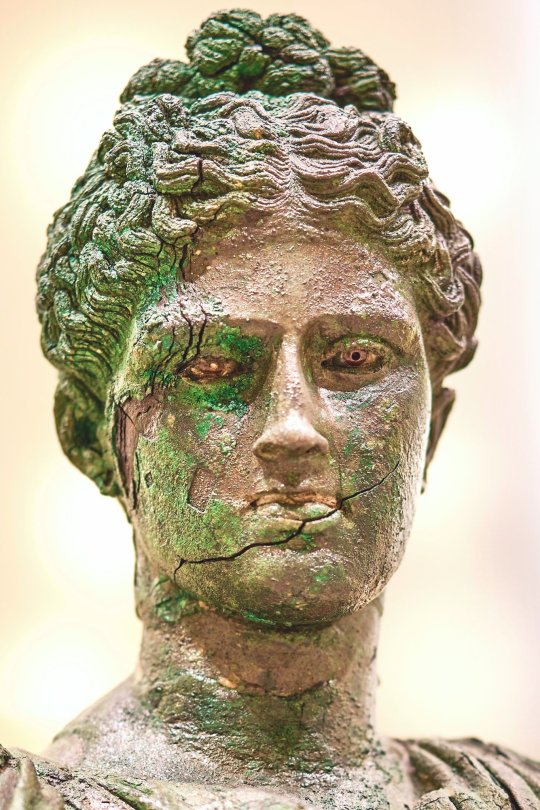
Close-up: Piraeus Artemis B, early 3rd century BC.
Archaeological Museum of Piraeus, Greece
📷 E. Koronaios
#dark academia#light academia#classical#academia aesthetic#escapism#academia#books and libraries#classic literature#books#architecture#Piraeus Artemis B#sculpture#statue#bronze#3rd century#bc#Archaeological Museum of Piraeus#greece#royal core#cottage core#academics#antiquity#art#aesthetics#mood#vibe#tumblr
801 notes
·
View notes
Text
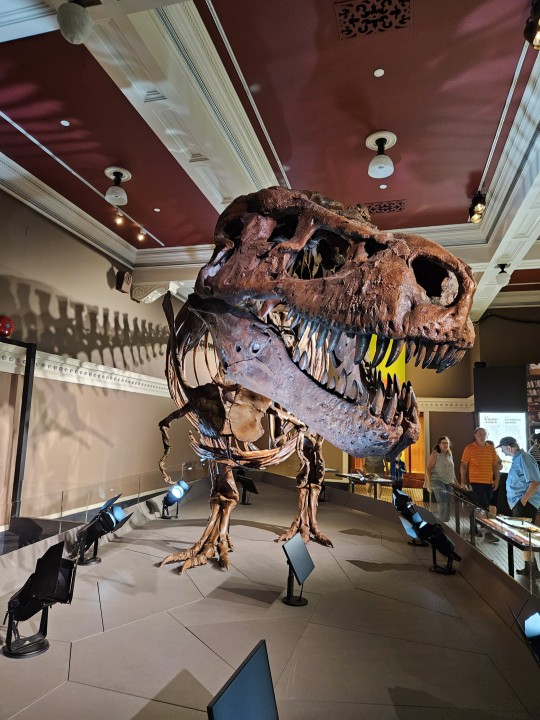
I met Sue today!
40 notes
·
View notes
Text
[ Ooc: I will try to write some replies today. Idk why, but yesterday, when I was on the bus back home, random Data muse struck me pretty hard. Idek what triggered it lol. ]
#ooc // second officer's personal log#maybe it was the dinosaurs I saw at the royal bc museum; data freaking loves dinos#ok ok ok but what if we wrote a dino time travel thread? would be so cool#kind of like time's arrow but instead of data's severed head they find fossilised trek tech lol a combagde or something#and while they are investigating they tread into a rupture in the space time continuum and BOOM dino time!
2 notes
·
View notes
Text
What it's like reading ur old writing and getting to a particularly awful or self-indulgent part

#Untitled Document why do you make me feel this way#I'm scrapping that ffxv h2o au fic I posted to ao3 its 4 years old and I have a better edition planned#I might just upload the rest of the 'continuous' parts as the rest of the chapters and then post the new version bc it's not even close#It's a completely different fic at this point#This isn't an HD texture pack release this is a total remake. We are going from 2d sprites to hyperrealistic 3d models#H2O au#Cruddy rambles#See in the new edition Celor actually isn't around when Ignis bargains with Leviathan and the pact itself is now fully fleshed out and a#Very conscious decision on his part after visiting the Lux Et Umbrae exhibit at the Lucis Royal Museum because there was a whole thing#With a marilith and Noct getting hurt and being terrified and then going to Tenebrae leaving Ignis behind to wonder wtf was going on and#Regis acting sus around him afterwards and then leviathan tricks him because he's 8 years old literally a child and he signs away his#Future in order to get what he wants#Vs the old version where it just sorta. Happens. Because he got sad for a little bit.#The spelldaggers thing is conversely LESS complex in the HD remake. Because it added nothing to the actual plot and this is long enough as#It is. The old guys are all still bros tho. Regis Cor Clarus Celor... They're all bros. And then the chocobros go on the trip and obtain#2 MORE DADS#Because while Cid can be a hardass he means well and cares about them and *basically* adopts them all after insomnia falls#And Weskham is one of my favorite characters in general he's just so fun to write... I am keeping all of his scenes basically the same#But adding even more and also a bit more context as to who he actually is (Regis's old adviser) because uh... That's important! Esp if he's#Dating secretary camelia#Also I added an extra scene to the mythril plot where ardyn infiltrates the group as Gladio to cause discord while Gladio is#Off hanging with Cor#Because we needed more of ardyn's illusions in the main plot esp before Altissia bc what da heck...
12 notes
·
View notes
Text
(( Today I am yet again furthering my “fuzzy fuzzy cute as fuck cow-like Dahlia” propaganda-
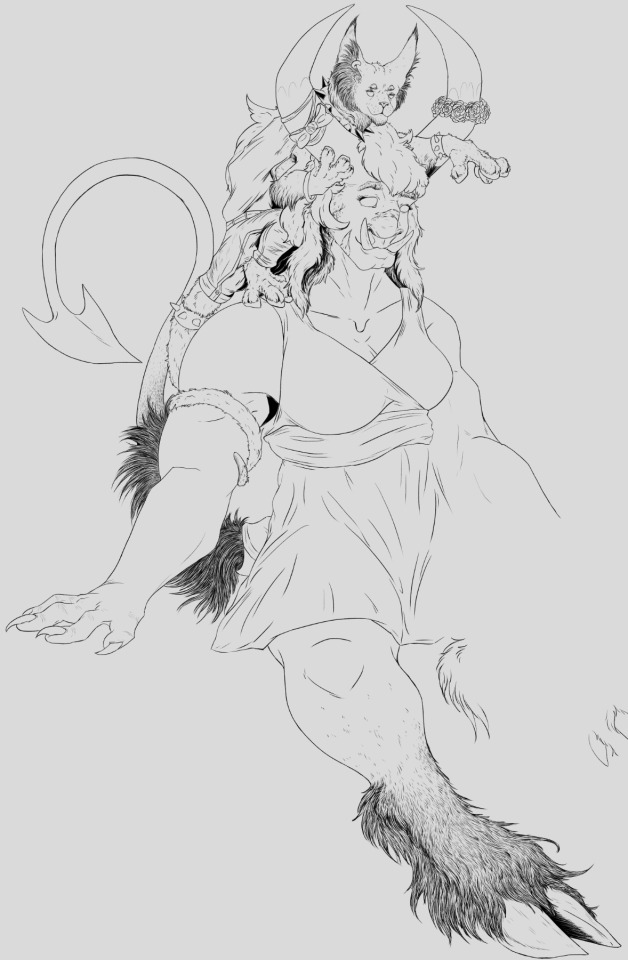
#Most secret royal advisor || OOC#The Parasitological Museum || Mun Art#(( she has BUILT-IN LEGWARMERS!!!!#(( and long lovely lashes bc cows have gorgeous lashes#(( also god i keep forgetting how much fun lineart is
2 notes
·
View notes
Text
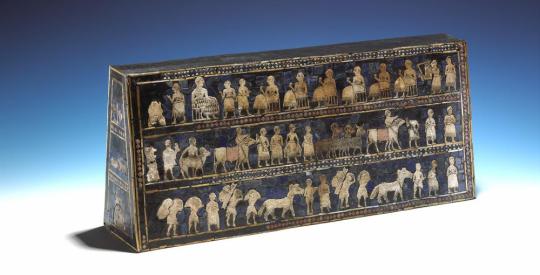
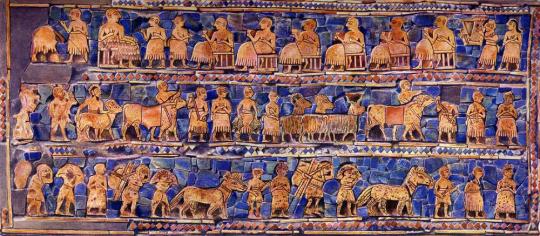


The Standard of Ur, a box, possibly a part of an instrument, decorated with lapis lazuli, shell, and red limestone depicting a war scene or military march. Uncovered from the Royal Tombs of Ur
Sumer, city of Ur, circa 2500 BC
from The British Museum
1K notes
·
View notes
Text
[Hanfu · 漢服]Chinese Late Warring States period(475–221 BC) Traditional Clothing Hanfu Based On Based On Chu (state)Historical Artifacts

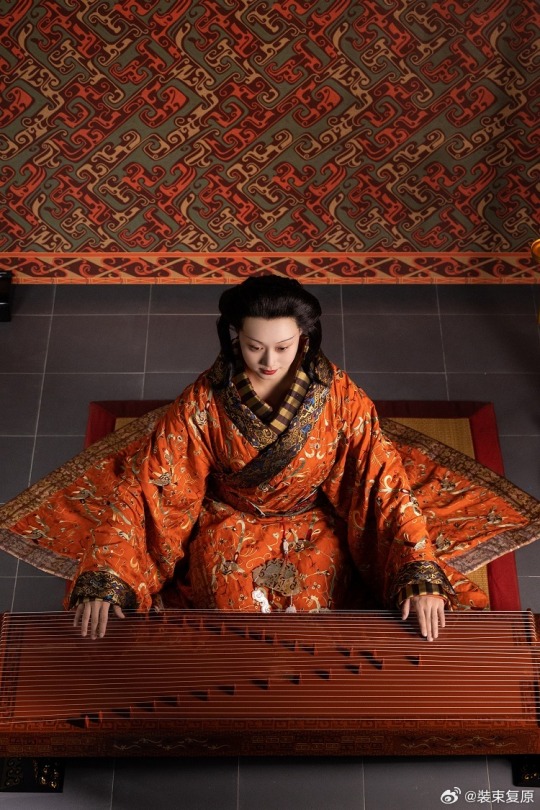
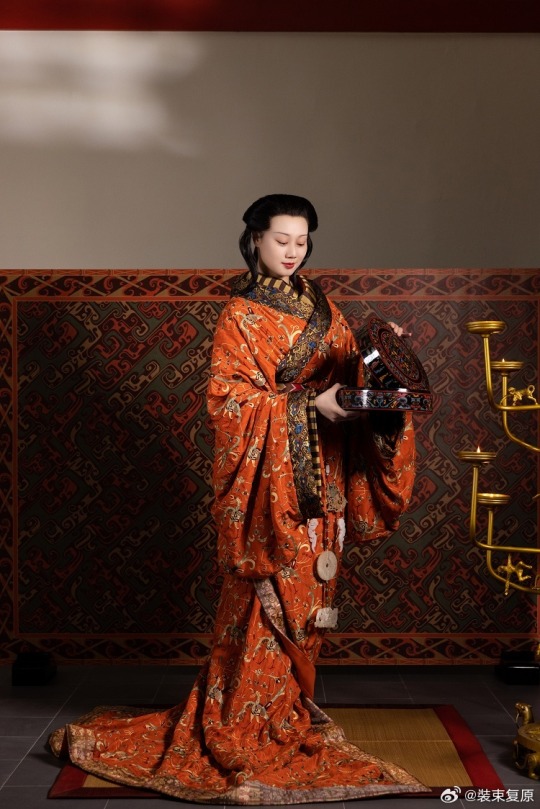
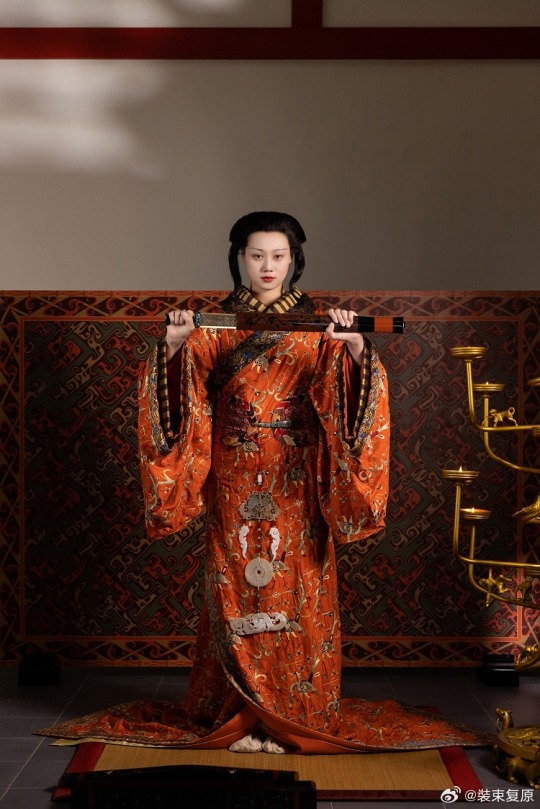
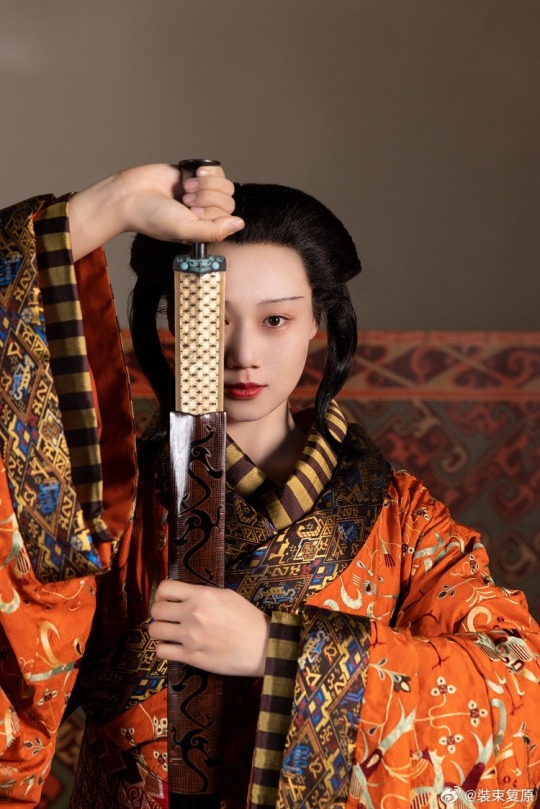
【Historical Artifact Reference】:
Late Warring States period(475–221 BC):Two conjoined jade dancers unearthed from Jincun, Luoyang,collected by Freer Museum of Art
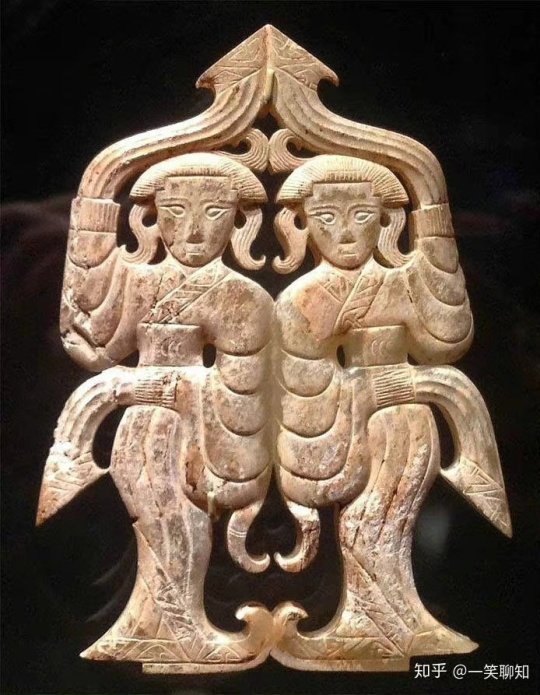
A similar jade dancer was also unearthed from the tomb of Haihunhou, the richest royal family member in the Han Dynasty, and was one of his treasures.

Warring States period, Eastern Zhou dynasty, 475-221 BCE,jade dancer by Freer Gallery of Art Collection.

Warring States period(475–221 BC)·Silver Head Figurine Bronze Lamp.Unearthed from the Wangcuo Tomb in Zhongshan state during the Warring States Period and collected by the Hebei Provincial Institute of Cultural Relics and Archaeology

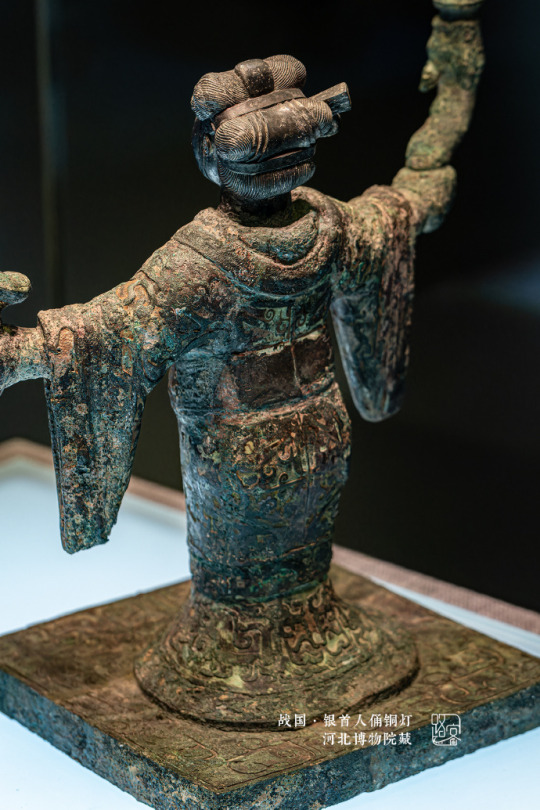
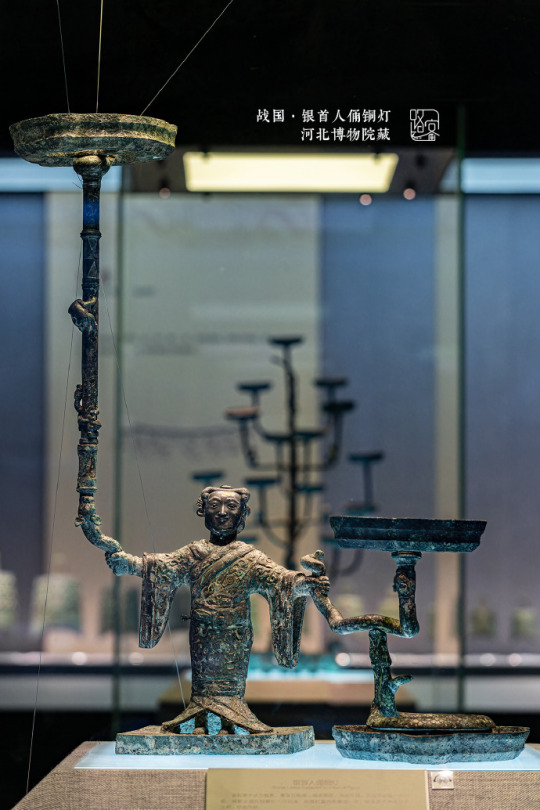
The figurine of a man dressed as a woman holds a snake in his hand, and 3 snakes correspond to 3 lamps.
Sword of Goujian/越王勾践剑:
The Sword of Goujian (Chinese: 越王勾践剑; pinyin: Yuèwáng Gōujiàn jiàn) is a tin bronze sword, renowned for its unusual sharpness, intricate design and resistance to tarnish rarely seen in artifacts of similar age. The sword is generally attributed to Goujian, one of the last kings of Yue during the Spring and Autumn period.
In 1965, the sword was found in an ancient tomb in Hubei. It is currently in the possession of the Hubei Provincial Museum.

【Histoty Note】Late Warring States Period·Noble Women Fashion
The attire of noblewomen in the late Warring States period, as reconstructed in this collection, is based on a comprehensive examination of garments and textiles unearthed from the Chu Tomb No. 1 at Mashan, Jiangling, as well as other artifacts from the same period.
During the late Warring States period, both noble men and women favored wearing robes that were connected from top to bottom. These garments were predominantly made of gauze, silk, brocade, and satin, with silk edging. From the Chu Tomb No. 1 at Mashan, there were discoveries of robes entirely embroidered or embroidered fragments. The embroidery technique employed was known as "locked stitches," which gave the patterns a three-dimensional, lively appearance, rich in decoration.
The two reconstructed robes in this collection consist of an inner robe made of plain silk with striped silk edging, and an outer robe made of brocade, embroidered with phoenixes and floral patterns, with embroidered satin edging. Following the structural design of clothing found in the Mashan Chu Tomb, rectangular fabric pieces were inserted at the junction of the main body, sleeves, and lower garment of the robe. Additionally, an overlap was made at the front of the main body and the lower garment to enlarge the internal space for better wrapping around the body curves. Furthermore, the waistline of the lower garment was not horizontal but inclined upward at an angle, allowing the lower hem to naturally overlap, forming an "enter" shape, facilitating movement.
The layered edging of the collars and sleeves of both inner and outer robes creates a sense of rhythm, with the two types of brocade patterns complementing each other, resulting in a harmonious effect. Apart from the robes, a wide brocade belt was worn around the waist, fastened with jade buckle hooks, and adorned with jade pendants, presenting an elegant and noble figure.
The reconstructed hairstyle draws inspiration from artifacts such as the jade dancer from the late Warring States period unearthed at the Marquis of Haihun Tomb in Nanchang, and the jade dancer from the Warring States period unearthed at Jin Village in Luoyang. It features a fan-shaped voluminous hairdo on the crown, with curled hair falling on both sides, and braided hair gathered at the back. The Book of Songs, "Xiao Ya: Duren Shi," vividly depicts the flowing curls of noblewomen during that period. Their images of curly-haired figures in long robes were also depicted in jade artifacts and other relics, becoming emblematic artistic representations.
The maturity and richness of clothing art in the late Warring States period were unparalleled in contemporary world civilizations, far beyond imagination. It witnessed the transition of Chinese civilization into the Middle Ages. The creatively styled garments and intricate fabric patterns from the Warring States period carry the unique essence, mysterious imagination, and ultimate romanticism of that era, serving as an endless source of artistic inspiration.
--------
Recreation Work by : @裝束复原
Weibo 🔗:https://weibo.com/1656910125/O6cUMBa1j
--------
#chinese hanfu#Late Warring States Period#Warring States period(475–221 BC)#hanfu#hanfu accessories#chinese traditional clothing#hanfu_challenge#chinese#china#historical#historical fashion#chinese history#china history#漢服#汉服#中華風#裝束复原
193 notes
·
View notes
Text
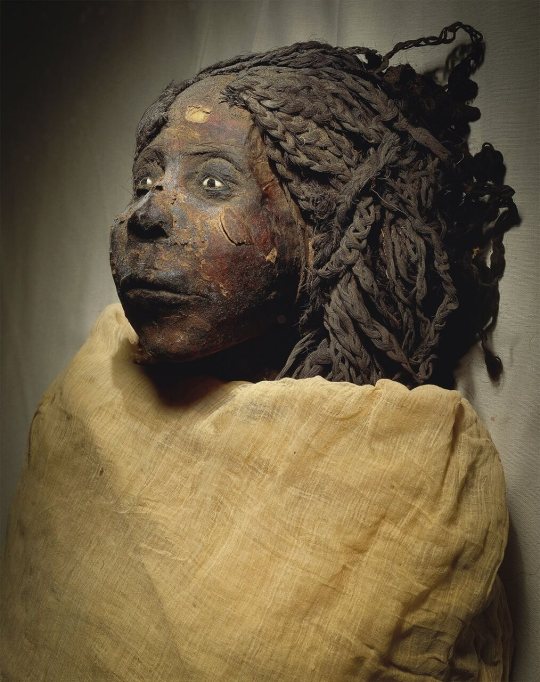
The mummified remains of Queen Nodjmet
Third Intermediate Period, 21st Dynasty, ca. 1069-945 BC.
Now in the Egyptian Museum, Cairo. JE 26215
The mummy of Queen Nodjmet was found in the Deir el-Bahari Royal Cachette (DB320). The mummy had been given artificial eyes, made of white and black stones. The eyebrows are real hair and she wears a wig. Her body and parts of her face were colored to give her a more lively appearance.
Nodjmet was an ancient Egyptian noble lady of the late 20th Dynasty or early 21st Dynasty of Egypt, the wife of Herihor, High Priest of Amun at Thebes. She may have been a daughter of Ramesses XI. Early in her life, she held titles such as Lady of the House and Chief of the Harem of Amun.
Read more
324 notes
·
View notes
Text


Colossal statue of Pharaoh Amenhotep III (ruled from 1407 BC to 1376 BC 9th Pharaoh of the 18th Dynasty), his Great Royal Wife Tiy or Tiye and three of his daughters. Saying that he was the father of Akhenaten, the “heretic” pharaoh.
It measures more than 4.4 m wide and 7 m high and was originally polychrome.
It belonged to the funerary temple of Amenhotep III, the largest built in Thebes, even surpassing the great temple of Karnak in dimensions. There are hardly any remains; today the statue is in the Egyptian Museum in Cairo.
254 notes
·
View notes
Text
EDI is here bc she is a robot but made 2 be human . Once again , you cannot swap anyone around , there are no other choices . You either get on the Greyhound or Not at all … you do choose how the adventure goes however
59 notes
·
View notes
Text

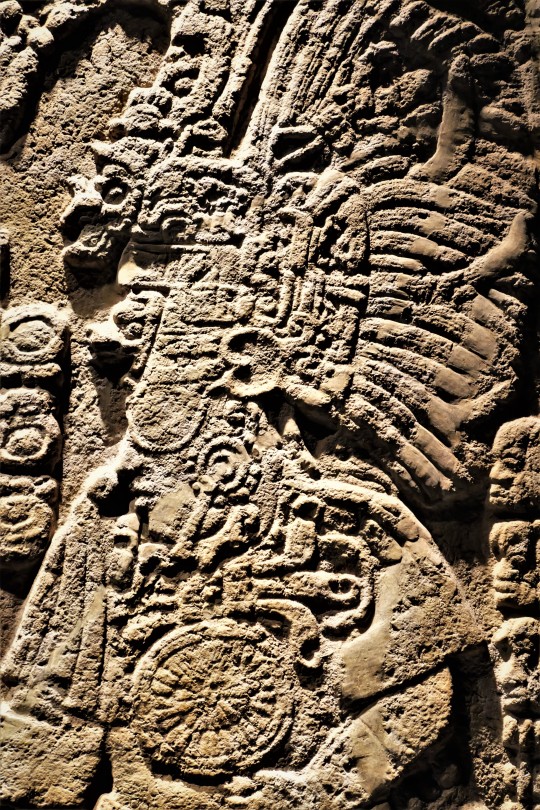
Mayan Limestone Stela from Naranjo, Guatemala dated between 600 to 900 CE on display at the Royal BC Museum in Victoria, Canada
The stela portrays the ruller of Naranjo, Itzamnaaj K'awiil, as a victorious military leader stepping over a bound prisoner. the ruler is dressed in attire that identifies him with the jaguar god of the underworld, a supernatural being associated with war and fire. Among his jaguar-god attributes are the jaguar ear over his hair, a fake beard on his chin and "fiery" tail behind him.
Photographs taken by myself 2019
#archaeology#mayan empire#maya#guatemela#guatemalan#art#fashion#history#medieval#royal bc museum#victoria#barbucomedie
10 notes
·
View notes
Text


The Standard of Ur is a Sumerian artifact of the 3rd millennium BC that is now in the collection of the British Museum. It comprises a hollow wooden box measuring 21.59 centimetres (8.50 in) wide by 49.53 centimetres (19.50 in) long, inlaid with a mosaic of shell, red limestone and lapis lazuli. It comes from the ancient city of Ur (located in modern-day Iraq west of Nasiriyah). It dates to the First Dynasty of Ur during the Early Dynastic period and is around 4,600 years old. The standard was probably constructed in the form of a hollow wooden box with scenes of war and peace represented on each side through elaborately inlaid mosaics. Although interpreted as a standard by its discoverer, its original purpose remains enigmatic. It was found in a royal tomb in Ur in the 1920s next to the skeleton of a ritually sacrificed man who may have been its bearer.
The original function of the Standard of Ur is not conclusively understood. Woolley's suggestion that it represented a standard is now thought unlikely. It has also been speculated that it was the soundbox of a musical instrument.[2] Paola Villani suggests that it was used as a chest to store funds for warfare or civil and religious works.[11] It is, however, impossible to say for sure, as there is no inscription on the artifact to provide any background context.
Although the side mosaics are usually referred to as the "war side" and "peace side", they may in fact be a single narrative – a battle followed by a victory celebration. This would be a visual parallel with the literary device of merism, used by the Sumerians, in which the totality of a situation was described through the pairing of opposite concepts.[12][13] A Sumerian ruler was considered to have a dual role as a lugal (literally "big man" or war leader) and an en or civic/religious leader, responsible for mediating with the gods and maintaining the fecundity of the land. The Standard of Ur may have been intended to depict these two complementary concepts of Sumerian kingship.[3]
The scenes depicted in the mosaics were reflected in the tombs where the "Standard" was found. The skeletons of attendants and musicians were found accompanying the remains of the kings, as was equipment used in both the "War" and "Peace" scenes of the mosaics. Unlike ancient Egyptian tombs, the dead were not buried with provisions of food and serving equipment; instead, they were found with the remains of meals, such as empty food vessels and animal bones. They may have participated in one last ritual feast, the remains of which were buried alongside them, before being put to death (possibly by poisoning) to accompany their master in the afterlife.[15]
181 notes
·
View notes
Text
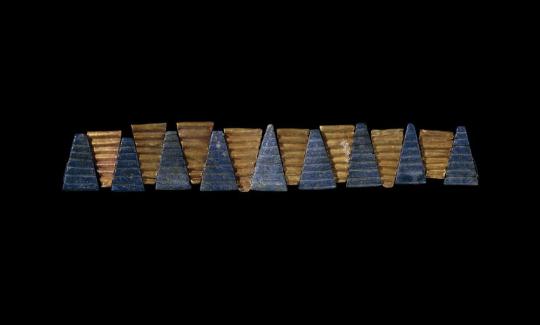
Gold and lapis lazuli choker, uncovered at the Royal Cemetery of Ur, Sumer, circa 2500 BC
from The British Museum
435 notes
·
View notes
Text
The fireplace:

This was actually an Achaemenid Persian lion with eagle wings. It was discovered for the first time in Hamadan(hegmataneh). During the Achaemenid period, it was one of the golden and royal vessels in which they drank in it. It's called "rhyton"
500 years BC



Also pictures are from the museum and not mine
What interesting things have you noticed in the movies?⚜️
#kingdom of heaven#baldwin iv#fandom#king baldwin iv#kingdom of heaven 2005#facts#art#history#ancient persia#ancient history#the leper king#fire place#decoration#history facts#achaemenid#movies
99 notes
·
View notes